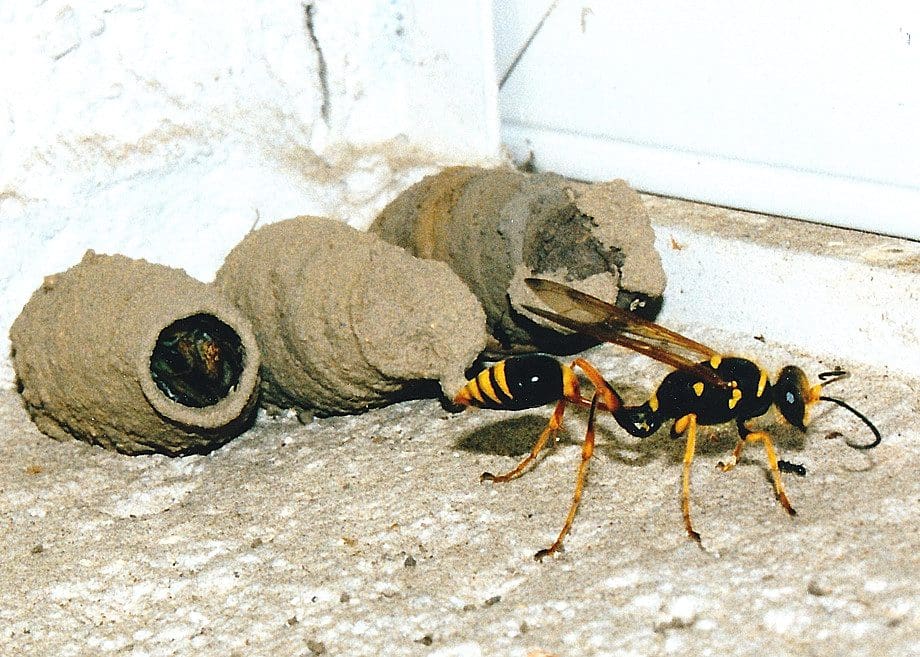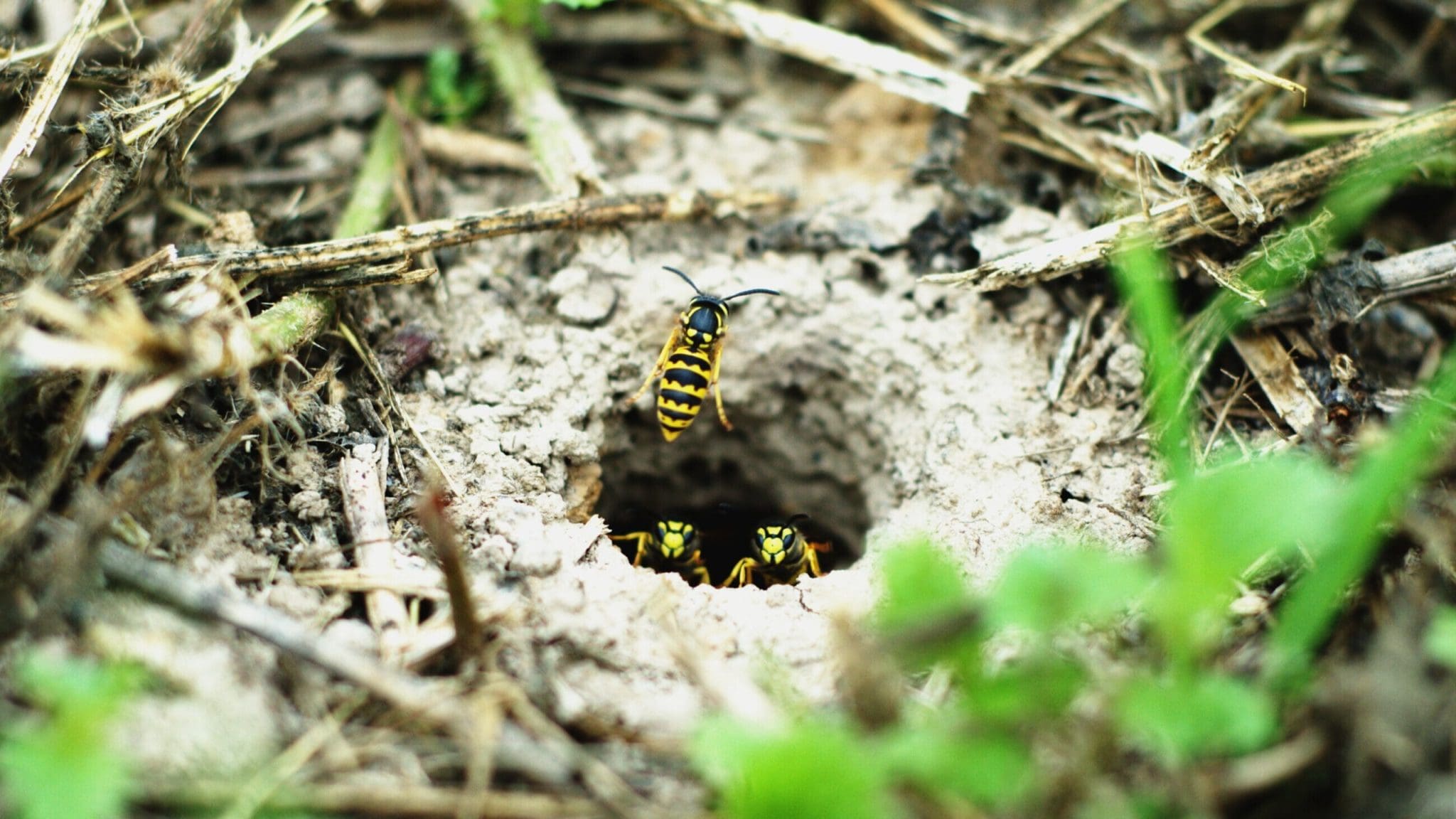Wasps
Optimal results. Minimal pesticide use. Minimal impact to the environment.
Wasps
The Sydney basin and Camden/Wollondilly Shires are home to many wasp species but the 3 most commonly noticed ones are:
Mud dauber wasps
Paper wasps
European wasps
The mud dauber wasps (or simply mud wasps) are relatively harmless, however paper and European wasps can be extremely aggressive.
Unlike bees that can sting you only once, wasps can sting multiple times – and the sting is far more painful.
When a wasp stings an intruder, it releases a pheromone (chemical) to alert other members of the colony to come and join them in the attack.
The most important part of treatment is to identify the species of wasp. All wasps are different in size, shape and colour, as are their nests.
If you’re seeing wasps and not sure which species they are, read on or call us and we’ll help you to identify them.
Mud dauber wasp
The tell-tale sign of a mud wasp is its nest. Usually made from mud and clay, it often resembles one or more mud tubes. The female stores spiders that she has paralysed and lays an egg in each cell. The newly hatched young feed on the live spiders before they emerge.
A mud wasp nest will be in a sheltered place, usually high up like under an eave or in a door jam. They may also set up in the folds of an item that is not used regularly such as an outdoor umbrella or a raincoat.
When left alone, mud wasps only use their stingers to paralyse spiders, which they eat. Because they are a natural form of pest control and aren’t threatening to humans, it is recommended to leave them alone.
Their nests can be removed safely with a broom or paint scraper.

Paper wasps
The paper wasp nest is also easy to identify. It is constructed of a series of hexagonal cells. Often the nest is hanging like a light shade from a strand, but it can also be clumped against the surface. You will often see wasps around the nest.
Do not approach a paper wasp nest as they can be aggressive and attack if they feel the nest is threatened.
The nest can start very small and therefore be hard to see. It is not uncommon for people to get stung walking under a tree branch or next to a shrub. Like the mud wasp, paper wasps often seek shelter from the elements so under eaves or outdoor furniture is common.
The sting from a paper wasp is very painful and can be dangerous if a person who is stung happens to be allergic to them.
DIY wasp treatments can be dangerous and ineffective, often resulting in an unexpected attack. It is best to leave a paper wasp treatment to the professionals. We have the necessary knowledge and experience, coupled with access to specifically targeted products, to eliminate the problem and any risk to you or your family.
You can help to reduce paper wasp infestations by:
Reducing foliage on or against structures
Implementing measures to manage the spider population

European wasps
The European wasp is an established pest in Australia. A non-native wasp, it was first found in 1959 in Tasmania and has since spread across the country. Numbers in some states are so bad that there are government funded eradication programmes.
European wasps are a significant problem because of the distance they will travel from their nest in search of food and the types of foods they are attracted to.
They love all forms of meat, sweet food and drinks. A human picnic is their ideal food source!
In Sydney, whilst they are not as common as paper wasps, they can often be mistaken for them. Slightly smaller and more stout than the paper wasp, the most noticeable difference is the colour of their antennae – paper wasps have yellow, European wasps have black.
Their nest, however, is very different to that of a mud or paper wasp. It is made from chewed wood fibre and is usually built either underground or in cavities in walls, ceilings, logs or trees.
If you think you have seen a European wasp or its nest, leave it alone and call us immediately.
You can help to reduce European wasp infestations by:
Not leaving food, drink or pet food outside
Picking up any fallen fruit from trees
Ensuring outdoor bins have tight-fitting lids
Covering compost bins
Covering food during a barbecue or picnic
Not drinking straight from a can or bottle when outside, as it could contain a wasp – drink from a straw



